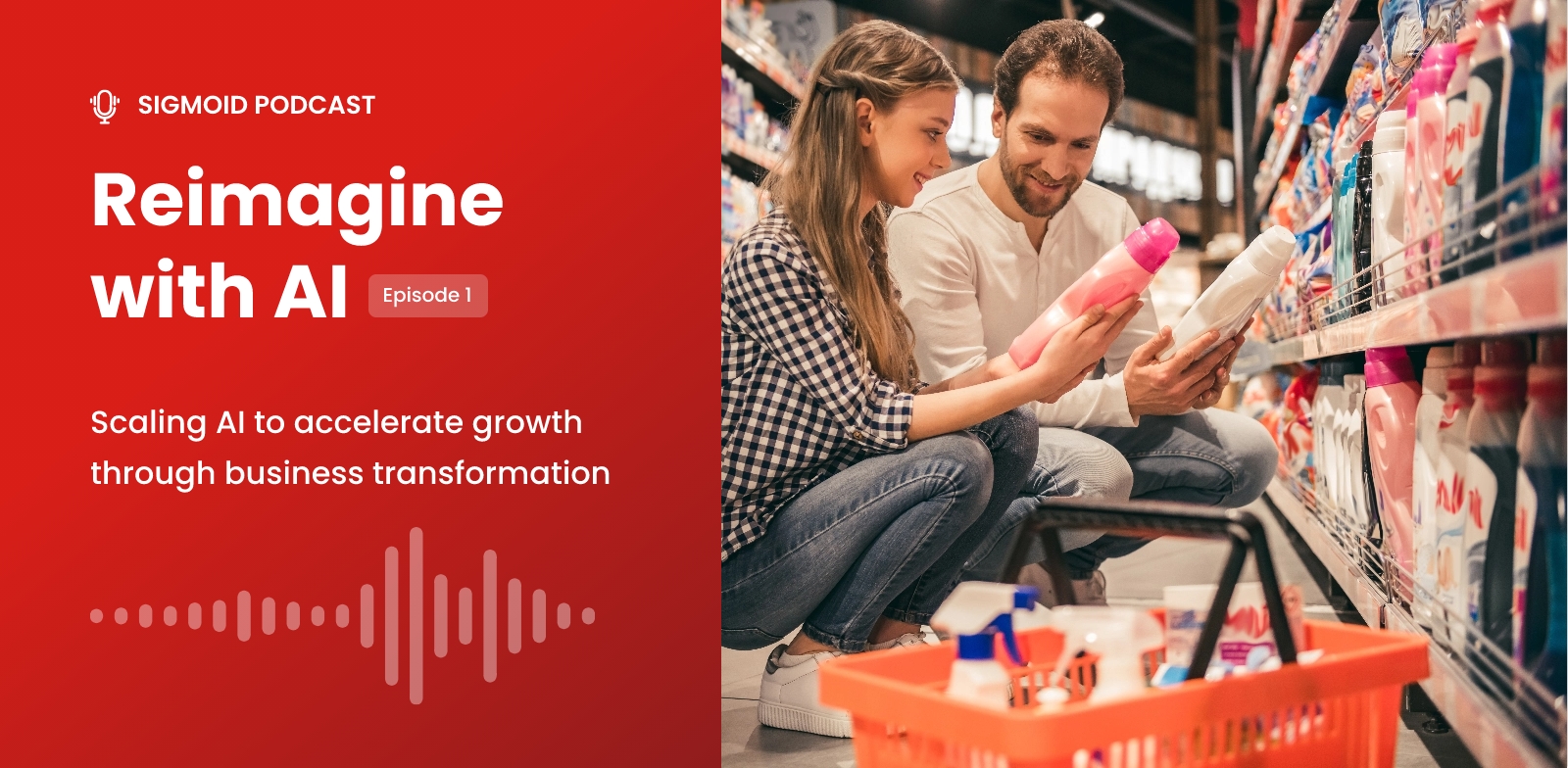When AI Meets the Drive-Thru: Lessons from Starbucks, Jack in the Box, and Beyond
Reading Time: 3 minutes

AI is reshaping how QSR brands operate, personalize, and deliver hospitality at scale. In the latest episode of Reimagine with AI, we explore how data, automation, and human experience are converging to transform one of the most operationally demanding sectors: quick service restaurants.
This episode features Paul Bruffett, VP of Data & Analytics at Jack in the Box, and former AI leader at Starbucks and Accenture. With deep experience building enterprise-scale personalization engines and modern data foundations, Paul explains how AI is shifting QSR economics, from forecasting and menu design to workforce productivity and guest experience.
Three strategic shifts in QSR
- Demand for insights continues to outpace supply
Digital-first operations generate more data than teams can analyze. AI helps surface patterns and opportunities that traditional analytics cannot. The most effective way forward is to build modular data products that empower teams to self-serve insights instead of relying on centralized backlogs.
- Technical debt is the silent drag on AI velocity
Early AI experiments often create fragmented models, duplicated logic, and inconsistent pipelines. Over time, this slows down delivery and increases operational complexity. Standardization, lifecycle governance, and platformization are essential to scaling efficiently.
- AI strengthens hospitality when human experience remains central
Automated ordering increases exploration and average check sizes, but a fully automated environment dilutes the guest experience. The right balance gives customers optionality, self-service when they want speed and human engagement when they want connection.
Where AI will create the largest enterprise impact
- Marketing:
Most QSRs operate with audience clusters rather than true one-to-one personalization. AI will enable individualized offers, dynamic messaging, and contextual recommendations at scale. - Supply Chain:
Forecasting, labor planning, and scenario modeling represent major untapped value. With food and labor costs defining margins, AI-driven demand sensing and supply chain optimization become critical levers. - Innovation:
Generative AI is emerging as a partner in menu development. Models can identify unexpected ingredient combinations, evaluate viability, and accelerate concept-to-market timelines.
What Separates Scalable Transformation from Isolated Pilots?
The majority of organizations run AI pilots; only a few convert them into sustained enterprise value. Scalable programs are grounded in:
- Clear, measurable success metrics such as AOV uplift, incremental revenue, or retention
- Structured experimentation frameworks with quantifiable incrementality
- Leadership alignment on ROI, ownership, and long-term prioritization
Without these foundations, initiatives remain in proof-of-concept cycles. With them, AI becomes integrated into the operating rhythm of the business.
Priorities for AI leaders in QSR
- Define success upfront: Align on the primary metric, AOV, repeat rate, cost-to-serve, or throughput, and design pilots around measurable outcomes.
- Audit technical debt: Identify fragile models, disconnected systems, and non-standard pipelines. Build a roadmap toward unified and interoperable AI components.
- Protect the human experience: Use automation to remove operational friction while reinforcing the touchpoints that drive emotional connection and loyalty.
- Accelerate supply chain AI: Prioritize forecasting and scenario planning, as these often deliver the highest and fastest ROI.
- Experiment with generative AI in innovation: Pilot one use case that supports menu or product ideation. Treat AI as an augmentation engine, not a novelty.
Conclusion
AI adoption in QSR is ultimately a question of values and design. Efficiency and experience are not opposing forces when AI is deployed with intention. The organizations that will lead the industry are those that use AI to eliminate friction, strengthen operational predictability, and reinvest time into the human interactions that differentiate their brand. This blueprint extends beyond QSR; any CPG or consumer business pursuing scale and loyalty in the AI era can apply the same principles.
You can listen to the entire podcast on Apple Podcasts and Spotify.
Featured blogs
Subscribe to get latest insights
Talk to our experts
Get the best ROI with Sigmoid’s services in data engineering and AI
Featured blogs
Talk to our experts
Get the best ROI with Sigmoid’s services in data engineering and AI






